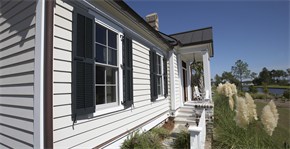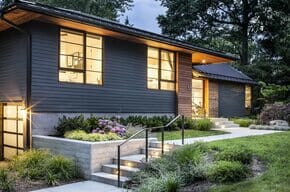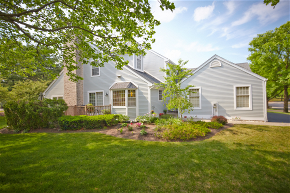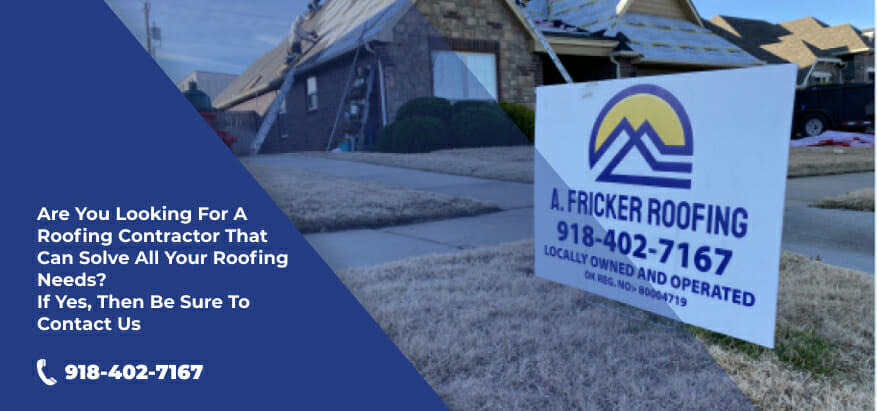Homeowners are always looking for a way to improve the look and functionality of their homes. Regarding siding, homeowners have two options: vinyl or Hardie board siding. But why are homeowners choosing James Hardie sidings these days?
Our team at A. Fricker Roofing and Waterproofing has put together this guide to answer that question. Our team has been helping homeowners make the best decision for their homes, and we hope to do the same for you.
Hardie Board vs. Vinyl: What’s the Difference?
Hardie board is a fiber cement siding made from natural fibers such as sand, and cellulose fibers, combined with cement. The result is a robust and durable material that can withstand damage from heavy rainstorms and severe weather conditions. It’s also more resistant to termites and rot than other siding materials on the market today.
Vinyl siding is made from polyvinyl chloride (PVC), making it more lightweight than other siding materials but is less durable than Hardie board. Vinyl can be easily scratched or dented during installation or repair work, however, it can be painted over easily if desired.
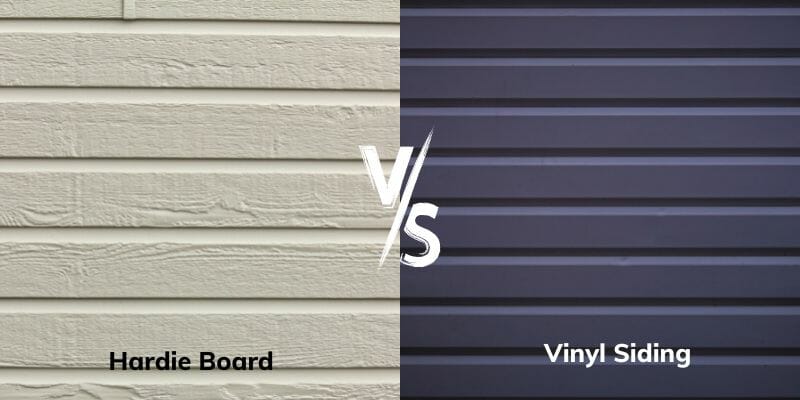
What Are The Pros And Cons of Hardie Board Siding?
Hardie board siding has been a staple in the home improvement industry for years, but more and more people are looking to make their homes as green as possible. James Hardie siding board is America’s favorite siding because it’s durable and long-lasting. Let’s take a closer look at some of the pros and cons of using this product.
Pros
Weather Resistance: If you live where hail, high winds, or salt spray from the ocean are common, Hardie board siding can protect your home from all these elements.
Long Lifespan: Hardie board siding can last for 50 years or more, so most homeowners will not need to replace their home’s exterior siding again during their time in the house. Most Hardie boards also come with a 50-year limited transferable warranty.
Eye-catching curb appeal: Hardie board siding is made to look like other materials, including wood lapboards, cedar shingles, and wood shake siding. They come in a wide range of colors. While all siding eventually fades, Hardie board siding typically comes with a 10 to 15-year warranty on the finish.
Resists pests: Hardie board siding resists pests like termites and carpenter ants, so you don’t have to worry about the hassles of repairing damage caused by these invaders.
Unmatched warranty: James Hardie siding products come with a non-prorated 30-year warranty, while trim products have a non-prorated 15-year warranty. If you choose to have James Hardie color applied at the factory, your finish will have a 15-year warranty against chipping, cracking, and peeling.
Highly customizable: Hardie board siding options give you many choices in personalizing your home’s appearance. Choose the style and color that matches the architecture of your house or the one you prefer.
Fire resistant: Hardie board siding is made of 90% sand and cement, making it highly resistant to fire damage. Fiber cement siding doesn’t burn, so it won’t contribute to a fire.
Expert installation: The James Hardie company has developed a contractor certification program, which helps homeowners feel confident when choosing their siding contractor and ensures optimal installation results.
Environmentally friendly: Since it’s made out of fiber cement, this siding is one of the more eco-friendly brands on the market, and the James Hardie company is committed to preserving our planet.
Low maintenance: Hardie board siding requires almost no maintenance. If you clean it with a garden hose and medium nylon bristle brush twice a year, that’s about all you’ll need to do.
Cons
Needs New Paint Every 15 Years
Hardie board siding requires repainting every 15 years to maintain its beautiful appearance. The ColorPlus Technology warranty covers your siding’s color for 15 years, so you may need to repaint it after the warranty runs out.
Difficult Installation,
Hardie board siding is heavier than other siding materials, making it more challenging to handle. As a result, James Hardie-trained professionals are the only ones who should install this product to ensure your warranty stays intact.
What Are Different Types of Hardie Board?
Well, there are a few different options to choose from:
- Hardie board lap siding is one of the most common types of HardiPlank because it has a timeless design with horizontal laps and comes in various textures and colors.
- Hardie board and batten siding is another popular style that works best for farmhouses or modern homes. It comes in wide vertical planks with a molding strip between boards for a rustic look.
- Hardie textured panels combine wide panels and trims in various textures for a more modern-looking home. This style is popular because it offers the best of both worlds, a classic look with a modern appeal.
- Don’t forget about Hardie shingles! Shakes and shingles mimic high-quality types of siding like cedar or wood but are longer lasting and more durable than most other types of shingles on the market today!
Popular Hardie Board Siding Colors
Hardie Board siding has come a long way.
Once upon a time, it was just another material for your house, but now it’s more than that.
With James Hardie color technology, you can rest assured that your siding and trim are primed and ready for painting on-site. If you’re looking for a longer-lasting paint job, they offer Color Plus Technology, and this is done at their manufacturing site using a machine to paint the siding. It uses 50% more paint than an average paint job, resists fading, chipping, and cracking, and looks better while lasting longer.
Are you ready to start but need help determining which colors would work best with your home’s exterior, design, and architectural style? We’ve got you covered!
Our Top 5 Picks For James Hardie Siding Color
While we’re sure there are many other options, we’ve narrowed it down to our top five picks, and we think they’ll make your home look fantastic.
Evening Blue
The rich and deep color of evening blue makes it a favorite for homeowners looking for an exterior color that will complement their existing style and call attention to their home’s curb appeal. It’s also one of our favorites because we think it looks great on all houses, from modern to ranch style.
Arctic White
White is a versatile color that can be used in various ways. Adding HardiePlank boards in arctic white to your home can give it a clean and crisp look. It pairs well with almost any accent color and is perfect for complementing landscapes containing natural elements, like trees or shrubs.
Shou Sugi Ban
When you’re looking for a siding color that will give your home a bold sense of character, look no further than Hardie Dream Collection’s Shou Sugi Ban. Derived from the ancient Japanese practice of preserving wood by charring and finishing it with natural oil, this gorgeous finish is rich and dark and provides a strong natural look that stands out on the exterior of your home.
Pearl Gray
Pearl Gray is a subtle neutral that doesn’t call attention to itself but complements its surroundings. Pearl Gray can be used on the exterior of an entire home or as an accent color on a front door, garage door, or other elements. Pearl Gray works well with traditional and contemporary styles and can help create a classic feel.
Chiseled Green
All hail the new neutral from James Hardie’s Magnolia collection! We love this excellent, toned-down, chiseled green color for your siding. It’s a great shade for someone who wants to add a little color to their home but not too much. It’s easy to match with other shades and patterns so that you can compliment other colors confidently.
How Much Does Hardie Board Siding Cost?
The cost of Hardie board siding vary based on the size and design of your home, and how much replacement work needs to be done. The average cost per square foot for this type of siding ranges from $1 to $6, so if you install Hardie board siding on an average-sized home (around 1,500 square feet), you could expect to pay anywhere from $1,500 to $9,000 in total installation costs.
Finals Thoughts
We’ve been installing siding in the Tulsa area for years, and we love working with Hardie board siding. It’s incredibly durable and easy to install, which makes it an excellent choice if you’re looking for a product that will last for years. We love using it because we’re confident that it will stand up to the elements and look great on your home.
You can check out our previous projects on Facebook to understand how this siding will look on your home. If you need further information, call us at (918) 402-7167. Our team is ready to answer any questions and discuss your project.


